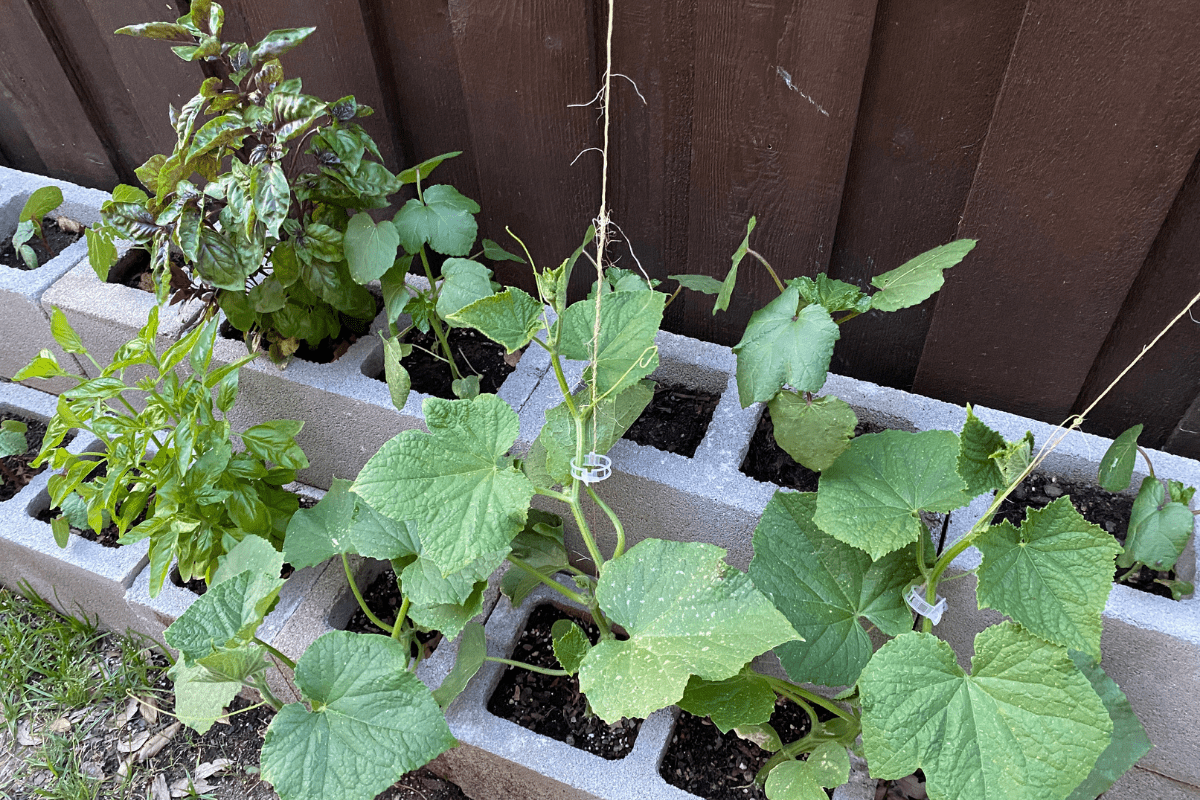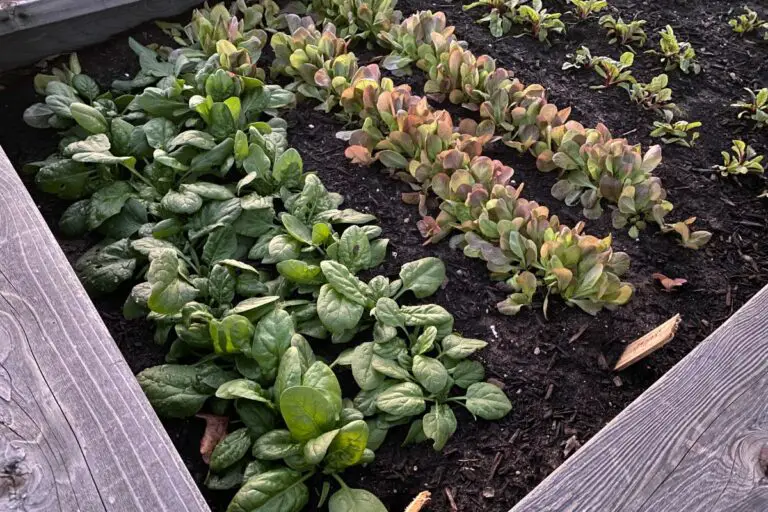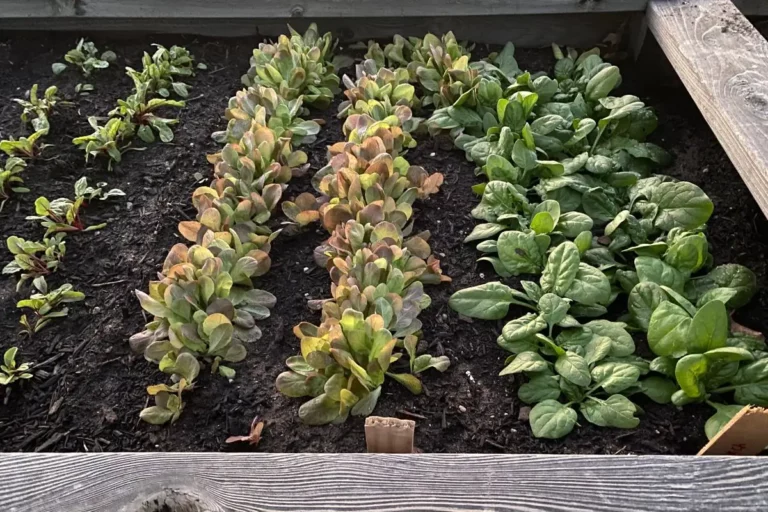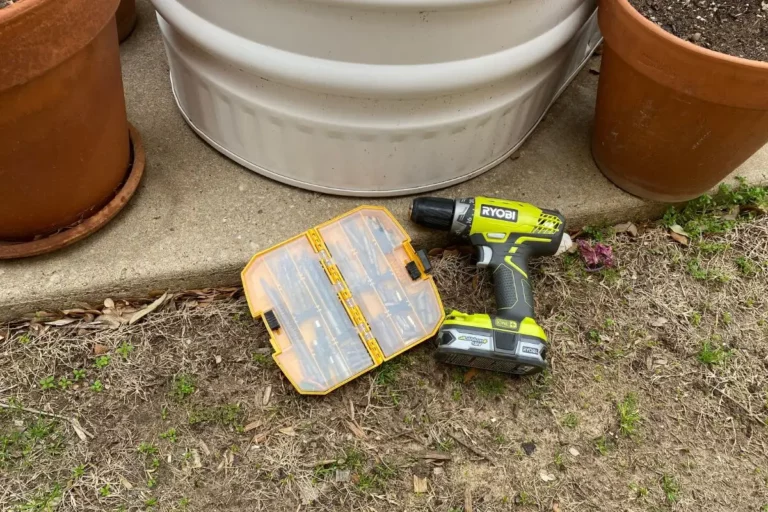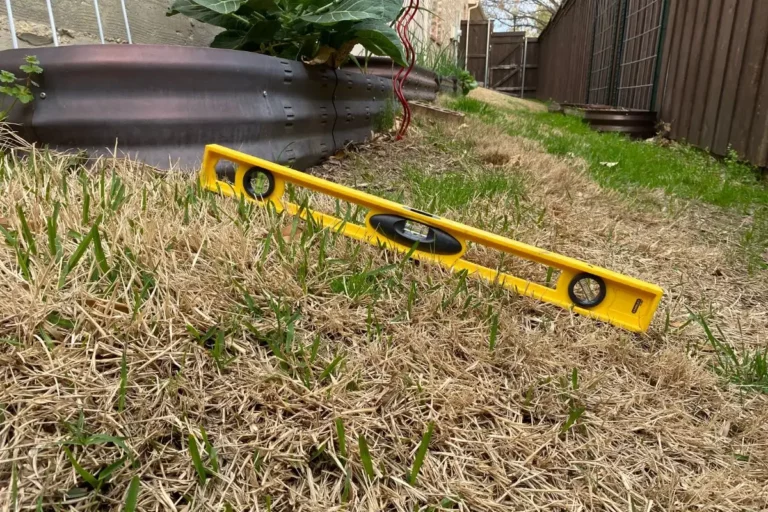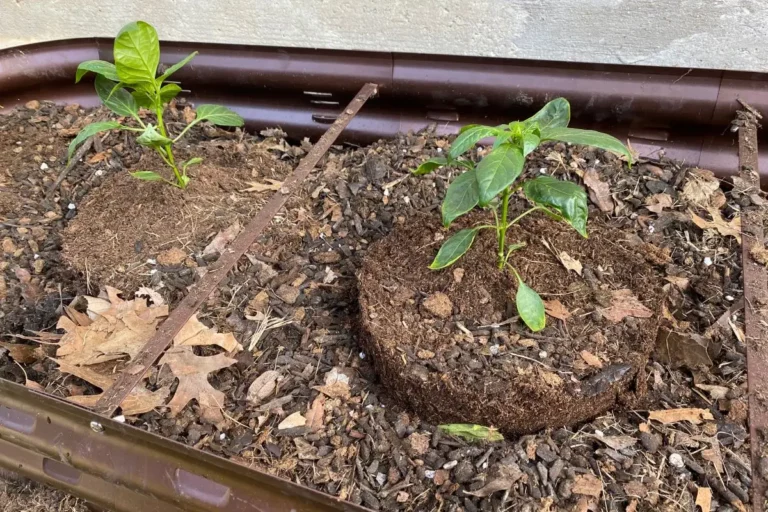Top 10 Reasons Why Concrete Blocks Are Good for Raised Garden Beds
Last year, I decided that I wanted to build a raised garden bed against a wooden fence in my backyard. Those amazing metal Vego beds would have been perfect, but I couldn’t spend that kind of cash at the time, so I was looking for an alternative that was more durable than wood but also fairly cheap.
Walking through my local home improvement store, I stopped in front of the concrete blocks and wondered, “Could I build a raised garden bed with those?”
I was hesitant at first, so I spent hours searching the internet for information about concrete block garden beds and concrete block safety. Here’s what I found.
Concrete blocks are a convenient, affordable option for raised garden beds. They are more durable than wood and cheaper than metal alternatives. Unlike old-fashioned cinder blocks, which contained coal ash, concrete blocks are made of a stone or sand aggregate and are thus safe for gardening.
Throughout the process of building my own concrete block garden bed, I learned various reasons why these are great building materials for anyone interested in raised garden beds.
Here are my top 10 reasons for using concrete blocks for your next raised garden bed project.
1. Concrete Blocks Are Safe
You don’t have to do too many Google searches to find people who are arguing over the relative merits and safety of concrete block raised beds. Those who suggest they aren’t safe typically claim one of two things. They’ll say that, over time, concrete blocks might leach harmful chemicals into the soil, making vegetables grown in such beds potentially unsafe. They might also claim that, given enough time, concrete blocks might leach lime into the soil, changing its pH balance and requiring testing and added amendments to return the soil to its normal pH level.
I understand these arguments, but I don’t know of any scientific evidence that backs up such claims. And I’ve spent hours researching this topic.
It’s true that old-fashioned “cinder blocks” often contained fly ash, a byproduct of burned coal, and that such blocks could potentially be harmful if used to build raised garden beds, but fly ash is rarely, if at all, used in concrete blocks these days. Crushed stone and sand are now the most commonly used aggregate materials.
Just to reiterate, I’ve seen zero scientific evidence to suggest that growing vegetables in concrete block garden beds is hazardous to your and your family’s health. Because of that, I’m convinced that concrete blocks are a cost-effective, safe alternative for building raised beds…which is why I’m growing veggies in them right now!
2. Concrete Blocks Are Customizable
One of the main benefits of gardening with concrete blocks is your ability to customize the dimensions of your garden bed without having to do much of anything beyond arranging and rearranging your concrete blocks.
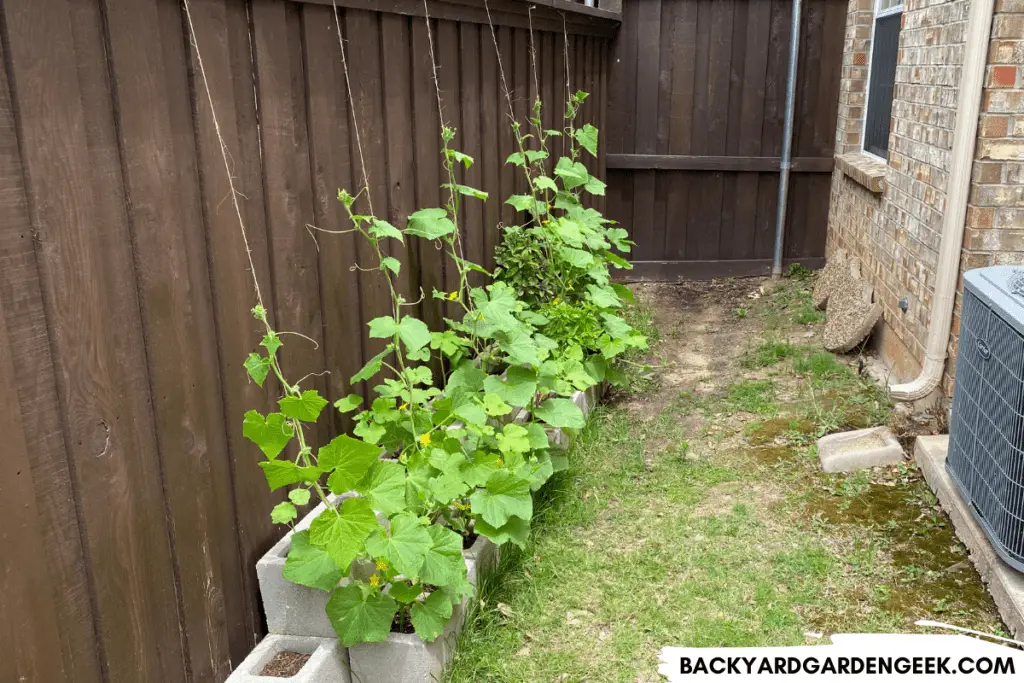
No saws or power drills. No tie plates or wood joiners or screws of any kind. Just place your blocks, make sure they’re level, fill them with soil, and get to work!
You can build your concrete block garden beds as long as you’d like them to be, but I’d recommend only 6 different styles in terms of the width of your bed:
| Style | Width | # of Holes | Configuration |
|---|---|---|---|
| 1 | 24 inches | 3 | 2-1 |
| 2 | 32 inches | 4 | 2-2 |
| 3 | 40 inches | 5 | 2-2-1 |
| 4 | 48 inches | 6 | 2-2-2 |
| 5 | 56 inches | 7 | 2-2-2-1 |
| 6 | 64 inches | 8 | 2-2-2-2 |
I wouldn’t recommend building anything larger than the 2-2-2-2 configuration because your bed will be too wide to easily access anything planted in the middle of the bed. The 2-2-2-1 width might also result in a bed that’s too wide overall for most people’s comfort, although the main interior planting area will only be 40 inches wide.
3. Concrete Blocks Are Cheap
As I mentioned earlier, I think that Vergo produces awesome raised beds, although at $100+ per raised bed system, you’ll definitely pay for what you get.
If you’ve got money to do so, I highly recommend it. If not, I recommend concrete blocks because they’re incredibly durable but also quite cheap.
The standard 8x8x16 block will cost roughly $1.90 per block. Single 8x8x8 blocks will cost around $1.60 per block. You can probably find cheaper blocks using an online marketplace, but I prefer to buy new concrete blocks so that I’m not unintentionally building a garden bed with decades-old blocks.
As I’ve noted in an article on plants that grow well in concrete block holes–and as you can see if you keep reading below–the typical concrete block raised garden beds will be anywhere from 24 inches to 64 inches wide. Depending on which width you choose, and how high you build it, here’s what it will cost to build concrete block raised garden beds that are 8 feet long.
Height: 1 Concrete Block (8 Inches Tall)
| Dimensions | Cost | Configuration | 8x8x16 Blocks | 8x8x8 Blocks |
|---|---|---|---|---|
| 24 in. x 96 in. | $26.00 | 2-1 | 12 | 2 |
| 32 in. x 96 in. | $26.60 | 2-2 | 14 | 0 |
| 40 in. x 96 in. | $29.80 | 2-2-1 | 14 | 2 |
| 48 in. x 96 in. | $30.40 | 2-2-2 | 16 | 0 |
| 56 in. x 96 in. | $33.60 | 2-2-2-1 | 16 | 2 |
| 64 in. x 96 in. | $34.20 | 2-2-2-2 | 18 | 0 |
Height: 2 Concrete Blocks (16 Inches Tall)
| Dimensions | Cost | Configuration | 8x8x16 Blocks | 8x8x8 Blocks |
|---|---|---|---|---|
| 24 in. x 96 in. | $52.00 | 2-1 | 24 | 4 |
| 32 in. x 96 in. | $53.20 | 2-2 | 28 | 0 |
| 40 in. x 96 in. | $59.60 | 2-2-1 | 28 | 4 |
| 48 in. x 96 in. | $60.80 | 2-2-2 | 32 | 0 |
| 56 in. x 96 in. | $67.20 | 2-2-2-1 | 32 | 4 |
| 64 in. x 96 in. | $68.40 | 2-2-2-2 | 36 | 0 |
Height: 3 Concrete Blocks (24 Inches Tall)
| Dimensions | Cost | Configuration | 8x8x16 Blocks | 8x8x8 Blocks |
|---|---|---|---|---|
| 24 in. x 96 in. | $78.00 | 2-1 | 36 | 6 |
| 32 in. x 96 in. | $79.80 | 2-2 | 42 | 0 |
| 40 in. x 96 in. | $89.40 | 2-2-1 | 42 | 6 |
| 48 in. x 96 in. | $91.20 | 2-2-2 | 48 | 0 |
| 56 in. x 96 in. | $100.80 | 2-2-2-1 | 48 | 6 |
| 64 in. x 96 in. | $102.60 | 2-2-2-2 | 54 | 0 |
As you can see, a simple 8-inch tall bed is incredibly affordable, ranging in price from $26.00 to $34.20. Assuming you lay a cardboard barrier underneath the bed–which will kill weed seeds but eventually decompose, allowing plant roots to reach your native soil–you can grow pretty much anything in an 8-inch-tall raised bed.
For comfort and convenience–and to keep small pests such as rabbits from accessing the garden bed–some people prefer taller beds, but as you can see above, each level you add increases the overall price of your concrete block garden bed.
For my purposes, an 8-inch-tall bed works just fine, allowing me to grow just about anything in both the main planting area and each of the concrete holes that surround the bed.
4. Concrete Blocks Last for Years
Here’s the thing that I love most about concrete blocks: They’re likely going to last the rest of my lifetime. Unlike antique cinder blocks–which were made from coal ash and were thus lighter and more prone to decay–concrete blocks are constructed using a stone and sand aggregate and are both heavy and incredibly strong.
Depending on annual weather conditions in your area, your concrete blocks could last anywhere from 50 to 100 years before they crumble. Compared to the 10 or so years that it takes for wooden beds to decompose, concrete beds are an incredibly affordable option for those interested in creating raised garden beds that stand the test of time.
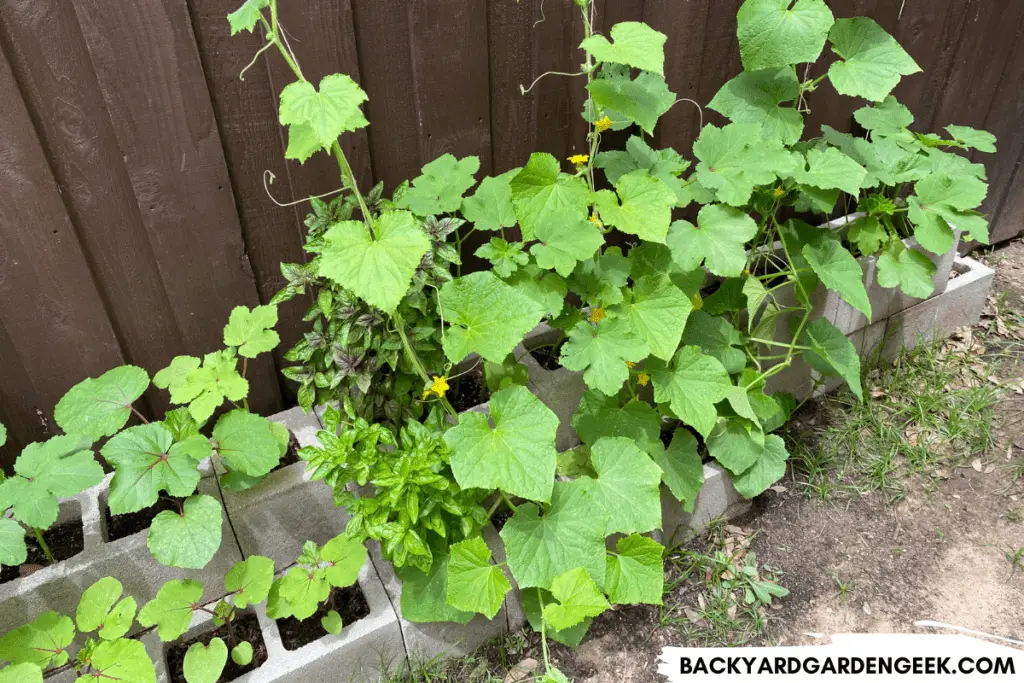
5. Concrete Blocks Are Sturdy
If designed correctly, concrete garden beds are incredibly sturdy structures, even those that are built several blocks high. But there are certain factors that you must consider to ensure the sturdiness of your raised bed, which is something I learned first-hand this past year.
Long story short, I decided to build a concrete block garden bed in a corner of my property that was otherwise useless yard space. On the north-facing side of my property, I had a 5-foot-wide strip of ground that ran between my fence and my house. It got 6-8 hours of sun per day throughout the spring and summer months, but it was overgrown with weeds, and no one in my family ever went back there.
The ground in that area was slightly angled so that water would run away from the house, and the soil was hard-packed clay (since I live in North Texas, where clay makes up so much of our native soil).
Because I didn’t feel like digging through clay, and since I was only building an 8 inch tall garden bed, I did not level the ground in that area but instead added an extra layer of concrete blocks to the back of the garden bed to account for the slope.
Despite the uneven ground, this bed is incredibly sturdy. It’s not going anywhere unless I decide to take it apart and move it to another part of my yard (more on that below).
6. Concrete Blocks Are Easily Rearranged
Here’s another thing I learned from my recent experience with concrete block garden beds: If you make a mistake, you can easily fix it.
As I noted above, I built a raised bed in a strip of ground on the north-facing side of my property. When I first built it, I did so because I noticed that that area of my yard received 6-8 hours of sunlight per day despite having a fence on one side and my house on the other.
However, to my great dismay, I realized in September that I had miscalculated and that, as fall and winter arrived, the sun’s arc across the sky dipped a few degrees further than I had initially anticipated. That slight change meant that my garden bed, which received plenty of sunlight during the spring and summer months, received no sunlight whatsoever during fall and winter. And here in North Texas, you can grow veggies all year long, so I knew that I had to relocate the concrete blocks to a different part of my property.
The bad news: It took an hour or two to dig out the soil, move the blocks, and re-fill the concrete blocks with soil. The good news: It was simple work, I got some exercise out of it, and it gave me an opportunity to rethink my plans for the backyard.
7. Concrete Blocks Provide Plenty of Space for Gardening
Using the configurations I’ve provided above–and knowing the exact measurements of the concrete holes in each block–you can easily determine just how much planting space you’ll have for each different configuration and how much soil you’ll need to buy if you’re planning to do so.
Let’s do so using the standard 8-foot-long garden bed dimensions I provided earlier. I’ll give the total volume here for your convenience–calculated in inches, cubic feet, and cubic yards–then explain below how I arrived at these numbers.
| Style | Dimensions | Cubic Feet | Cubic Yards |
|---|---|---|---|
| 1 | 24 in. x 96 in. | 6.7 | .25 |
| 2 | 32 in. x 96 in. | 9.9 | .4 |
| 3 | 40 in. x 96 in. | 13.19 | .49 |
| 4 | 48 in. x 96 in. | 16.47 | .61 |
| 5 | 56 in. x 96 in. | 19.7 | .73 |
| 6 | 64 in. x 96 in. | 22.98 | .85 |
To find the cubic volume for each of these garden beds, you must first multiply the length, width, and depth of the main planting area to find that area’s total cubic volume.
You’ll then need to calculate the cubic area of a concrete hole, multiply that area by the number of concrete holes surrounding your bed, and add that number to the previous number to get the total cubic area for your concrete block raised garden bed. This will help you determine the amount of soil you’ll need for your bed.
Concrete holes are typically 5.5 inches x 5.5. Inches. To convert cubic feet into cubic yards, take the overall cubic foot volume and divide it by 27.
Style 1: 24 inches wide x 96 inches long x 8 inches tall + 26 concrete holes.
- Main Bed: .67 feet wide x 6.67 feet long x .67 feet high = 3 cubic feet.
- Concrete Holes: .46 feet wide x .46 feet long x .67 feet high x 26 = 3.7 cubic feet.
- Total Volume: 6.7 cubic feet or .25 cubic yards.
Style 2: 32 inches wide x 96 inches long x 8 inches tall + 28 concrete holes.
- Main Bed: 1.33 feet wide x 6.67 feet long x .67 feet high = 5.9 cubic feet
- Concrete Holes: .46 feet wide x .46 feet long x .67 feet high x 28 = 4 cubic feet.
- Total Volume: 9.9 cubic feet or .4 cubic yards.
Style 3: 40 inches wide x 96 inches long x 8 inches tall + 30 concrete holes.
- Main Bed: 2 feet wide x 6.67 feet long x .67 feet high = 8.94 cubic feet
- Concrete Holes: .46 feet wide x .46 feet long x .67 feet high x 30 = 4.25 cubic feet.
- Total Volume: 13.19 cubic feet or .49 cubic yards.
Style 4: 48 inches wide x 96 inches long x 8 inches tall + 32 concrete holes.
- Main Bed: 2.67 feet wide x 6.67 feet long x .67 feet high = 11.93 cubic feet
- Concrete Holes: .46 feet wide x .46 feet long x .67 feet high x 32 = 4.54 cubic feet.
- Total Volume: 16.47 cubic feet or .61 cubic yards.
Style 5: 56 inches wide x 96 inches long x 8 inches tall + 34 concrete holes.
- Main Bed: 3.33 feet wide x 6.67 feet long x .67 feet high = 14.88 cubic feet
- Concrete Holes: .46 feet wide x .46 feet long x .67 feet high x 34 = 4.82 cubic feet.
- Total Volume: 19.7 cubic feet or .73 cubic yards.
Style 6: 64 inches wide x 96 inches long x 8 inches tall + 36 concrete holes.
- Main Bed: 4 feet wide x 6.67 feet long x .67 feet high = 17.88 cubic feet
- Concrete Holes: .46 feet wide x .46 feet long x .67 feet high x 36 = 5.1 cubic feet.
- Total Volume: 22.98 cubic feet or .85 cubic yards.
This breakdown is not intended to be complicated. Instead, I’m hoping to show you both how much soil you’ll need depending on the size and configuration of your bed while also showing you how to calculate what you’ll need based on various garden bed sizes.
8. Concrete Blocks Are Good for Tall Raised Beds
Concrete blocks are excellent for building tall raised garden beds, but there are a few things you need to keep in mind before building one.
The first has to do with cost. The higher you go, the more you increase the overall cost of your project, what you’ll pay for the concrete blocks as well as the amount of soil you’ll need to fill the bed. You can cut down on soil costs by practicing Hügelkultur— which involves filling the bottom half of your bed with sticks, leaves, and other compostable materials that will break down in 6-12 months—but you’ll pay extra for every additional level of concrete blocks that you add to the raised garden bed.
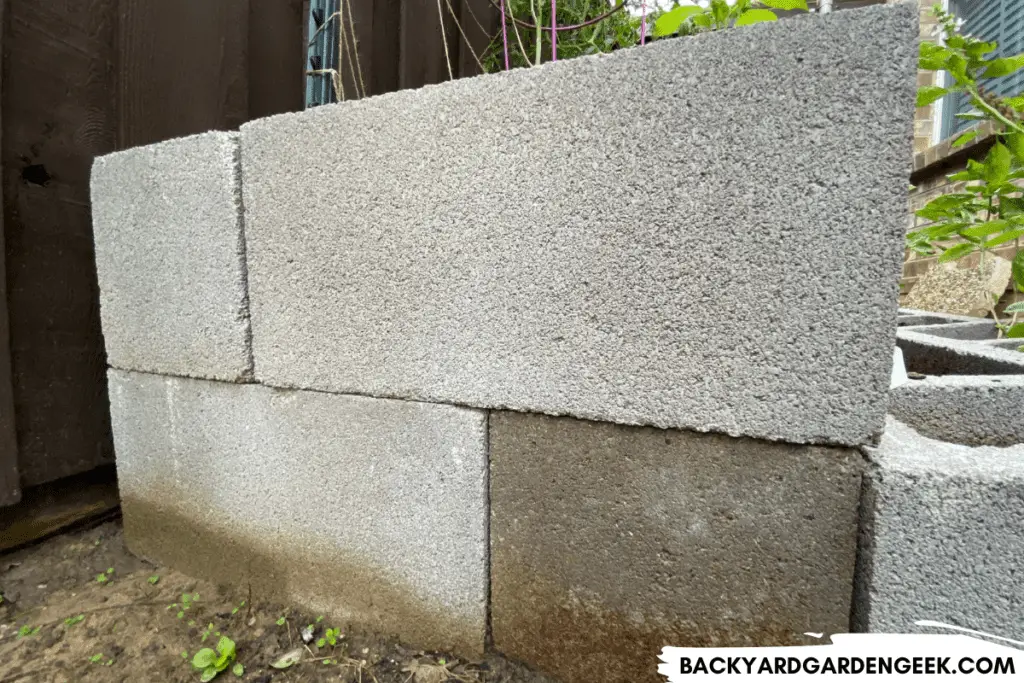
If you plan on building a bed that is 2, 3, or even 4 concrete blocks tall, you must make sure the bed is level. If the first row of concrete blocks is unlevel, the second, third, and fourth rows will produce an increasingly unsturdy, and possibly even dangerous, raised garden bed.
I do not recommend building a concrete block raised garden bed that is more than 4 blocks high, for reasons related to both sturdiness and overall cost.
If you’re concerned about the sturdiness of your bed, buy 6 rebar and drive them into the concrete holes at the corners of your bed as well as the holes at the center of each side of the bed. These rebar will increase the overall sturdiness of the bed. But personally, I find this unnecessary if you design the bed properly since the weight of the concrete locks will result in an incredibly sturdy structure.
Simply put, as long as you pay close attention to leveling, you’ll find that concrete blocks are great for building tall raised garden beds.
9. Concrete Block Holes Are Good for Plants
One of the things I love most about concrete block garden beds are the opportunities they offer to grow plants in the concrete block holes that surround the main planting area.
There are many plants that thrive in concrete block holes, as I’ve written about previously. Some you’d suspect would do well, like herbs. But larger plants such as okra and sunflowers do just fine too. The same goes for all kinds of flowers.
In fact, you can intersperse larger plants with smaller ones to make the most of your concrete block holes. You can even plant beans, peas, and other climbing plants in holes next to okra and sunflowers, and the latter will provide a natural trellis system.
One thing I’d suggest for anyone using concrete blocks for garden beds: Pick 2-3 holes around the bed and plant marigolds in them. These will serve as a trap crop for spider mites and other garden pests. If you’ve had such pest issues in the past, try putting resistant plant varieties in both the main bed and the concrete block holes and mix up a powerful neem oil spray to stop bugs from gaining a foothold in your garden.
10. Concrete Block Holes Are Good for Supports
Another nice thing about concrete block beds is that their holes provide a natural space for adding supports to your garden.
Let’s say you want to add metal fence posts to your garden bed to provide added stability for climbing plants. You can simply hammer the metal post into a concrete hole at two corners of the bed, then hang netting between the two posts or run twine or rope from one post to the other (aka the “Florida weave”).
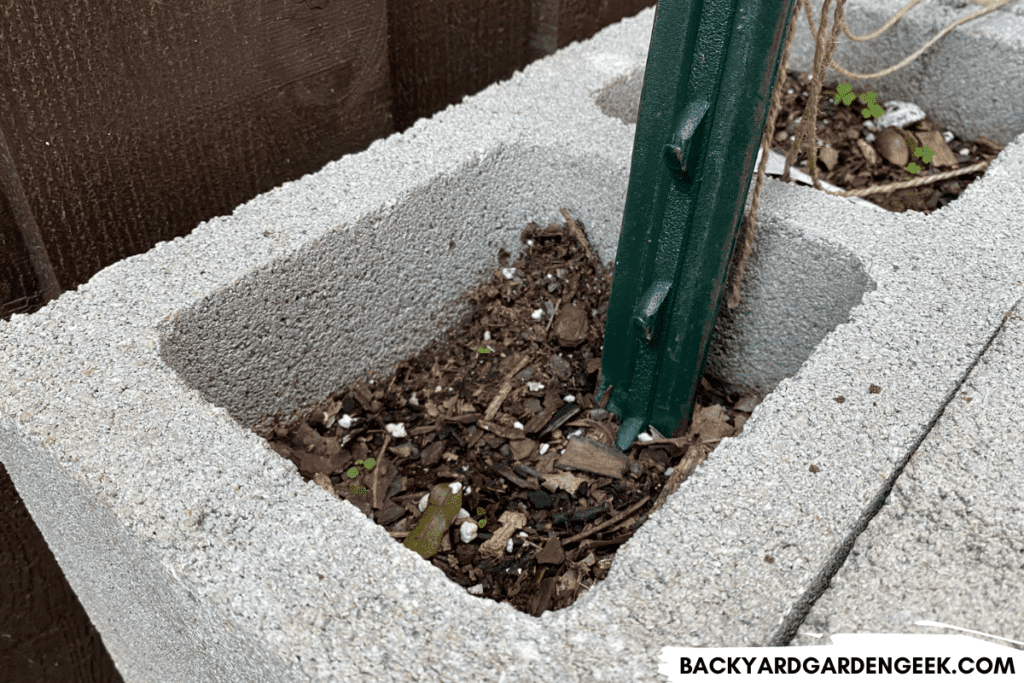
Concrete block holes are also great for anyone interested in using cattle panels as trellises. The end of the cattle panel can fit snugly into the concrete block holes, and you can either attach the cattle panel to two fence posts or curve it so that it forms an arch between two garden beds.
Simply put, the concrete block holes are perfect for constructing plant support systems for larger, climbing plants.
Reasons Why Not to Use Concrete Blocks in Garden Beds
As you already know, I like building raised garden beds using concrete blocks. However, there are some objections worth considering if you’re trying to decide whether to use concrete blocks, wood, or metal for your next raised garden bed.
Concrete Blocks Are Heavy
There’s no getting around this. At around 35 pounds each, concrete blocks are downright heavy. I don’t recommend building with them if you’re experiencing back, shoulder, or knee problems.
You can use any vehicle to transport concrete blocks to your property, but I’d recommend using a truck or trailer. I’ve used my minivan to haul a few blocks here and there, but I wouldn’t want to fill it with 20-30 of them.
Concrete Blocks Are Practical, Not Pretty
Unless you apply paint to the exterior of your concrete block raised bed, it’ll have that dull gray look, which is not exactly eye-catching. If you value aesthetics over practicality, you’ll need to paint the bricks or opt for wood or metal raised beds, which are typically more attractive.
Personally, I’m value practicality and affordability over aesthetics, which is why I’m not concerned about the look of my concrete block raised beds.
Concrete Blocks Can Get Hot
If you live somewhere where the summers get very, very hot, please be careful when designing a raised garden bed made of concrete blocks. I recommend doing so in an east-facing area of your property that will get some shade in the latter part of the day.
You don’t want too much shade, or your plants won’t grow well. But if you built a concrete block raised garden bed in an area of your yard that gets full sun from sun-up to sun-down, you’ll need to water more frequently since the concrete will heat up throughout the day. I recommend drip irrigation systems for concrete beds that are exposed to full sunlight all day long during extremely hot summers.
More so than the other reasons listed here, this could be the one reason why you’d want to avoid concrete blocks. But everything depends on the makeup of your property (i.e. where your house is located and how many trees you have) and how hot it gets during your hottest summer months.
Concrete Blocks Might Affect pH Levels
Although I’ve read about this in gardening blogs, I haven’t seen any good research to back up the claim that, over time, concrete blocks affect soil’s pH levels. Whether or not you use concrete blocks for raised garden beds, it’s a good idea to get your soil tested once every few years so that you know where things stand in terms of your soil’s overall health and composition.
